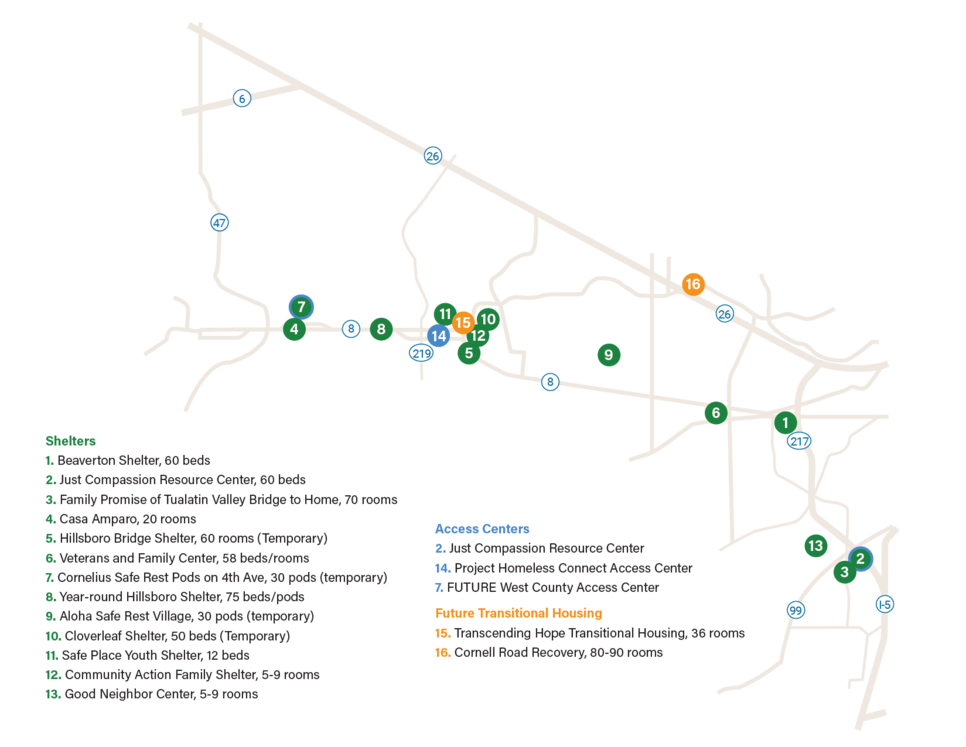Washington County oversees a complex and coordinated shelter system that provides a steppingstone to long-term housing for people experiencing homelessness. Since 2021, Washington County has been able to successfully expand shelter availability due funding from the Supportive Housing Services measure and Governor Kotek’s Executive Order 23-02. Continuing to expand shelter programs reduces the number of individuals and families living on the street and provides a safe and stable respite in the transition to long-term housing. This webpage describes the Washington County process to determine where new shelter programs are located, and how local community members can be informed and help support the effectiveness of these new shelters.
Locating Potential Sites
Washington County works with multiple stakeholders before acquiring a potential site for a shelter. This includes working with city partners, certified realtors, faith organizations and other property owners in locating potential sites. Guidelines are also developed with City partners and others involved in this process. County staff use “Community Guidelines: Expanding Shelter Programs with Equity,” to determine if a potential site location is a viable shelter location. Considerations include:
- Location size, condition of the property, utilities
- Access to transportation,
- Access to services, employment and community resources,
- Geographic and demographic distribution
- Impact on local communities or public services such as schools, playgrounds or public parks.
Preparing for a New Shelter
Once staff have determined that a location is viable for creating a new shelter and the property owner has agreed to site use, Washington County begins the community engagement process by notifying nearby neighbors of the new shelter site and inviting interested neighbors to participate in community discussions. Community engagement helps establish program management expectations, neighborhood livability issues, and expectations for future communication. Our process is as follows:
- Suitable site identified
- Nearby neighbors notified of shelter plans & community meetings
- Information session introduces staff and program
- Workshop with partners, law enforcement, & neighbors to form Neighborhood Plan
- Neighborhood Plan draft review meeting
- Nearby neighbors notified of shelter opening & final Neighborhood Plan
- Feedback collected 6 months after shelter opens

Existing and Planned Shelter Programs
Washington County funds several types of shelter services, including congregate (shared space) shelters, converted motel-based shelters, and alternative models using pod shelters or pallet homes. Washington County will also begin funding transitional housing in 2026 with an emphasis on stabilization and recovery to serve as a more long-term steppingstone for people experiencing homelessness. Through different shelter and transitional housing models, Washington County serves the varied needs of people experiencing homelessness including families with children, veterans, medically fragile adults, youth, and families or individuals with pets.
Note: Additional severe weather shelter capacity is added during extreme weather (such as heat waves, freezing temperatures, and snowstorms)
To view planned shelter and current shelter, transitional housing, and access center locations, see the map below.


